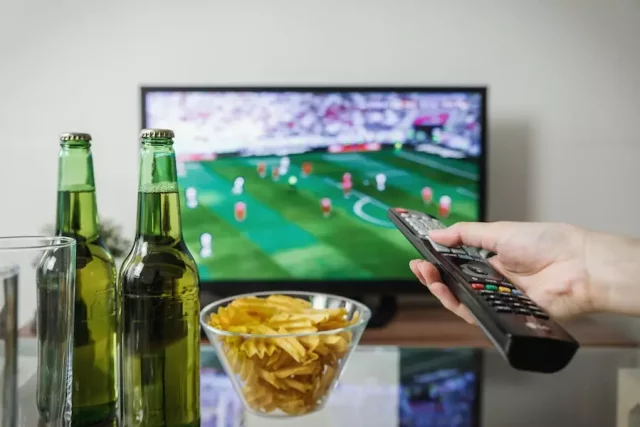Slowly, televisions are evolving with the progress of technology. Smart TVs are replacing traditional TVs. As a result, the market for smart TV is anticipated to grow by 293.32 million units. As with other applications, though, these smart TV apps require regular updates, and app testing on smart TVs is the need of the hour.
Why Is Smart TV Testing Necessary?
Smart TVs’ ability to run applications is a significant selling point, as it allows users to access various online media services. Like mobile phones, certain apps come pre-installed, and users can download others anytime. Testing functionality and interoperability can be complex because there are so many different Smart TV platforms, operating systems, and apps, and these components are frequently updated. However, end-to-end smart TV test automation can assist in exposing security flaws in developing Smart TV apps, enhancing the viewing experience for consumers.
Why Is Smart TV App Testing Different From Mobile App Testing?
Like other newfangled electronic gadgets, smart TVs run on an operating system (OS) that can run various programs (apps). Even while the operating system is essential for functioning, the smart TV’s applications make the gadget valuable and versatile. Due to the commonality of operating systems and software toolkits, an intelligent TV app may easily pass for a smartphone app. However, user interaction with a smart TV app makes conventional testing methods inappropriate. When using a smartphone app, the user engages with the touchscreen (i.e., the application) directly by hand; when using a smart TV app, the user engages with the app via a separate device, the remote control. Furthermore, the user of any TV (even smart TVs) is often disengaging from the screen and nearly exclusively using the remote device to run the apps. While some companies are now letting customers engage with their products through the touchscreen, testing procedures mostly revolve around the remote control device.
What Should You Know Before Testing Smart TV?
Platform guidelines
Most businesses adhere to standard practices, including providing immediate and precise control feedback, eliminating extraneous screen levels, and maintaining uniformity in navigation, screen layouts, and controls. Applications must adhere to specific rules before they may be posted on any Platform Store, such as the App Store. Testers and developers must follow these rules to prevent the rejection of their applications.
Different network
Sometimes testers miss cases where the internet connection could be better. However, there are a few case studies that must be taken into account throughout smart TV app testing. First, users must be presented with an appropriate error message during a network outage. The Retry button should have error messages. All smart TVs can stream videos. An essential testing hint is to simulate various internet use cases, such as the continuation of video streaming once network connectivity has been restored. An appropriate message on the Splash screen is required during a network outage. A 2G network should be fine for the software.
Different Resolutions
The size of the screen and the viewer’s proximity to it are the two main factors that separate mobile app development from that of television. A user’s satisfaction with their television viewing experience is directly tied to the picture quality. In addition, developers need to think about angular resolution, which is how well one can see fine features in an image. Therefore, the uniqueness of the design and the comparability of the things are given significant weight. An application may run well at one resolution but crash at another, especially when switching between higher- and lower-resolution displays. CSS is to blame since it is coded in pixel or EM. The development team needs extreme caution because most TVs do not support pixel CSS.
Video/ Audio streaming
Smart TVs’ ability to stream videos has contributed to their widespread adoption. Therefore, it is essential to test all possible streaming scenarios thoroughly. After a break in connectivity, you can resume watching a video stream. The sound and the picture need to be synchronized. Multiple-platform live videos should sync up properly. Video playback that can be fast-forwarded or rewound through a buffer. Listening to music via headphones. A screensaver that works in tandem with the movie
App UI
The goal of the app’s development and testing teams should be to reduce the number of controls on the remote as much as possible while maintaining the app’s single-click functionality. The testing team should investigate the smoothness of the app’s operation from the user’s standpoint. The interface needs to be intuitive and easy to understand, the visuals should be of good quality and crisp (alignment and spacing should be taken into account), and the resolution should be optimized for the size of the user’s screen. The loading indication and search functionality should both help users find new material as they wait for it to finish loading or buffering.
Emulator
Emulators are custom-made software that mimics vital Smart TV functions. Emulators are used in place of genuine Smart TVs because of the high cost and logistical challenges associated with creating a working Smart TV prototype. However, not all Smart TV systems, including ROKU, offer emulation support, even those that sometimes have limitations. Consequently, inaccurate testing is conducted. Steam is a video player that requires a physical device to function. No support for keyboard navigation is available. Due to the impossibility of doing a network check, no network-related test can be conducted.
Conclusion
Smart TV automation testing minimizes the enormous work required to create and maintain a testing grid for Smart TVs. HeadSpin is an example of an automated testing tool. HeadSpin natively supports the Appium framework. Unfortunately, the open-source Appium version can only handle Apple TV 4th generation, not Apple TV 4K. However, this tool has built a 4K for Appium-compatible solution for network devices. Ensure excellent user experiences, greater productivity, and high user engagement by securely testing content on Smart TVs with HeadSpin.














